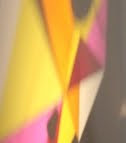when form is neither a division of time nor a mark of eternity...

"the limitless and continuous movement of a living body is fixed into a stationary position. but the movements are not weakened by being formalized. it is a sort of continuous creation which gains in activity and power upon being formalized. the form is neither a division of time nor a mark of eternity. it is the movement of that inseparable entity which is at once momentary and yet eternal."
soichi tominaga in sofu teshigahara
hiroshi teshigahara directed several of my favorite films, most notably woman in the dunes. teshigahara's cinema world is filled with tension, claustrophobia, angst, and a feeling of overwhelming heaviness - if air is to breathe, sometimes it can be so thick as to suffocate.
i don't know much about the director's biography, but when i picked up this catalog of works by sofu teshigahara, from 1958, i wondered if they might be related, and was surprised to find out that the sculptor was in fact the director's father. in 1926, as a young 25 year old artist of ikebana (traditional japanese flower arrangement), sofu founded the sogetsu school, which was celebrated for its mastery of traditional ikebana techniques in conjunction with more experimental and avant garde languages.
by 1930, his expanded language moved beyond flowers and vases, to an ikebana exhibition using scrap metal, and he eventually moved away from ikebana at times to create large scale stand alone sculpture, thereby creating not only arranged forms, but formed forms. after the 30's, his works tended to move back and forth between expanding ikebana language and modern sculpture, and his 1949 exhibition was considered revolutionary in relation to ikebana traditions.
sofu's thorny limbed structures, and his sometime use of fragmented - almost fractal-like and punctured - surfaces, reek of a kind of post-apocalyptic being, suggesting not just a response of someone who experienced WWII in japan, but also an existential consciousness and postwar nihilism that became part of the art of japan in the late 50's, which was shared across mediums with the gutai group, fluxus, the electronic avant garde works of composer's such as takemitsu, and experimental film through directors like sofu's son hiroshi.
while sofu's sculpture look tame by contemporary standards, his movement from framing flowers to carving thorns suggests an aggressive act towards trying to reconcile the violence of recent human behavior. the works feel like organic mutations; and as much as the thorny works are provocations, his softer smaller "blobby" sculpture seem not only quiet, but weak and underfed. kobo abe's work seems a perfect meeting ground for the elder and younger teshigaharas' works - with the younger making films from abe's texts, and the elder making multi-limbed sculpture with auras reflective of the queasy sexual atmosphere of abe's writing.
even though tominaga's introduction talks mostly about sofu's sculpture in formal terms - equating the formal with time, physical movement, psychology, etc., i think the power in sofu's work does not come so much from the way he fragments surfaces, and plays with futurist time and cubist space, as much as his sculpture feeds off a kind of desperate, uncanny feeling, that gives the works' formal beauty a whole lot of tension.
by western standards these 1958 sculpture seem hardly aggressive or revolutionary, but in the late 50's sofu's works were certainly moving into their own territory - not just within the context of ikebana, but in terms of sculpture in general. this is particularly visible with the red piece pictured above, which looks a bit like a later ken price merged with the surface of a disco-ball, and the 'thorny' works which remind me of early anish kapoor sculpture minus the raw pigment.
unlike noguchi, sofu remained in japan, and it was his relationship to a single traditional japanese craft - ikebana, that gave his work a very different feel than noguchi's, which was influenced much more by a response to japanese aesthetics overall than a conversation or conflict with a single traditional craft medium. i think that once noguchi embraced western ideas of modern art and culture, his constant return to japanese tradition and/or craft was a way of maintaining his connection to eastern aesthetics. this wasn't an attempt to disrupt or work against tradition, as much as to include it in his modernist dialogue - and thus expand western modernist language. sofu's relationship was much more about breaking tradition and craft wide open, to expand japanese sculpture - and ikebana - visual language.
i have no idea if sofu ever read manga, but one could loosely compare his dark, mutant, broken, mended, thorny - and beautiful - forms, with the dark post-apocalyptic creatures and narratives of someone like osamu tezuka (who not only wrote sci-fi comics about a robot boy, but also a comic version of the life of buddha). neither was particularly interested in popular culture's language, as much as they were both attempting to express a 50's eastern human condition - not so much through the visual language of advertising and pop culture as much as revealing the emptiness, and feeding the psychological needs, hidden beneath it. both artists revolutionized their crafts in ways that allowed them to continue to work with, and against, the traditions they were part of. ikebana and manga has never been the same since.
Labels: flower arrangement, sculpture, sofu, teshigahara, woman in the dunes



0 Comments:
Post a Comment
<< Home